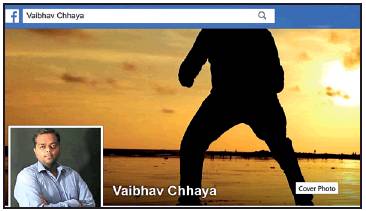On Friday, Dalit activist Vaibhav Chhaya, who has over 10,000 followers on Facebook, uploaded a photograph of a man waving from the grilled window of a police van. Tagged simply “Rahul Pradhan”, the image has garnered over 300 reactions and provoked comments like, “You can’t keep a tiger locked in a cage for long”. A member of the Yuva Panthers, Pradhan was arrested in Nanded city on Wednesday on a host of charges including rioting and criminal conspiracy and endangering the life or personal safety of others. Dalit activists insist he was framed when he tried to visit the family of the 16-year-old boy who died in the riots on Wednesday. He was released on bail on Thursday, only to be re-arrested by the Shivaji Nagar police while leaving the court premises. “The police were scared that if he reached the spot where the teenager was killed, he would reveal what had really happened,” says Chhaya.
In order to broadcast this version of events, Chhaya turned to social media platforms, which he claims have started playing a larger role in Dalit agitations. “The mainstream media ignores the issues faced by scheduled castes and tribes so most of us have stopped reading the paper,” he says. “For the Ambedkarite movement, social media is our social capital because it keeps us connected to one another.” Since the Koregaon Bhima riot on January 1, Chhaya has used social media to offer food, shelter and medical assistance to those in need, help Dalits who lost their belongings or whose vehicles were burnt, reach home safely, coordinate different groups during the bandh, and arrange legal representation for arrested protesters. He started a crowdfunding campaign — and broadcast live on Facebook — to thank people for the Rs 35,900 raised to help get Pradhan and others out of jail.
Political analyst Surendra Jondhale has seen an uptick in the use of social media by Dalit activists in the last five years. He says that even before violence broke out in Bhima-Koregaon, social media was buzzing with information about the bicentenary of the battle, the importance of attending the rally and the significance of the memorial. “Social media is being used to spread propaganda and mobilize the Dalit masses,” he explains. According to Jondhale, the downside is that social media forwards and posts often lack historical accuracy, context and diverse perspectives, which is why he is conflicted on whether the authorities should resort to suspending mobile and internet services like they did in Aurangabad on January 3. “It depends on the motive,” he explains. “If the motive is to clamp down on freedom of expression that is bad, but if it is to prevent rumours from being spread that is good.”
Sometimes activists use social media to raise awareness about a crime that might remain unreported. Dalit activist Laxman Gaikwad used Facebook to draw attention to the alleged murder of two tribal sisters and their father in Hingoli district. The police claimed that the girls and their father drowned by accident, but when activists investigated the incident, they came to believe that the three had been murdered. “I wrote about the incident on Facebook. This prompted a Lokmat journalist to visit the site and do a story,” says Gaikwad.
https://epaper.timesgroup.com/Olive/ODN/TimesOfIndia/#

Leave a Reply